Abstract
1. The effects of temporal modulation on the properties of spatial frequency channels have been investigated using adaptation.
2. Adapting to drifting sinusoidal gratings caused threshold elevation that was both spatial frequency and direction specific. Little systematic difference was found between the band widths of the elevation curves for drifting and stationary gratings.
3. It was confirmed that adaptation fails to reveal channels at low spatial frequencies when stationary gratings are used. However, channels were revealed at frequencies at least as low as 0·66 c/deg when the test gratings were made to move. These channels are adapted only a little by stationary gratings, confirming their dependence on movement.
4. The existence of movement-sensitive channels at low spatial frequencies explains the well known observation that temporal modulation greatly increases the sensitivity of the visual system to low spatial frequencies.
5. Temporal modulation was effective at revealing these channels only when the flicker or movement of the test patterns was apparent to the observer; only at low spatial frequencies did patterns, modulated at low rates, actually appear to be temporarily modulated at threshold. At higher spatial frequencies, they were indistinguishable from stationary patterns until the contrast was some way above the detection threshold.
6. It is suggested, therefore, that the movement-sensitive channels are responsible for signalling the occurrence of movement; the channels at higher spatial frequencies give no information about temporal changes. These two systems of channels are compared to the Y- and X-cells respectively of the cat.
Full text
PDF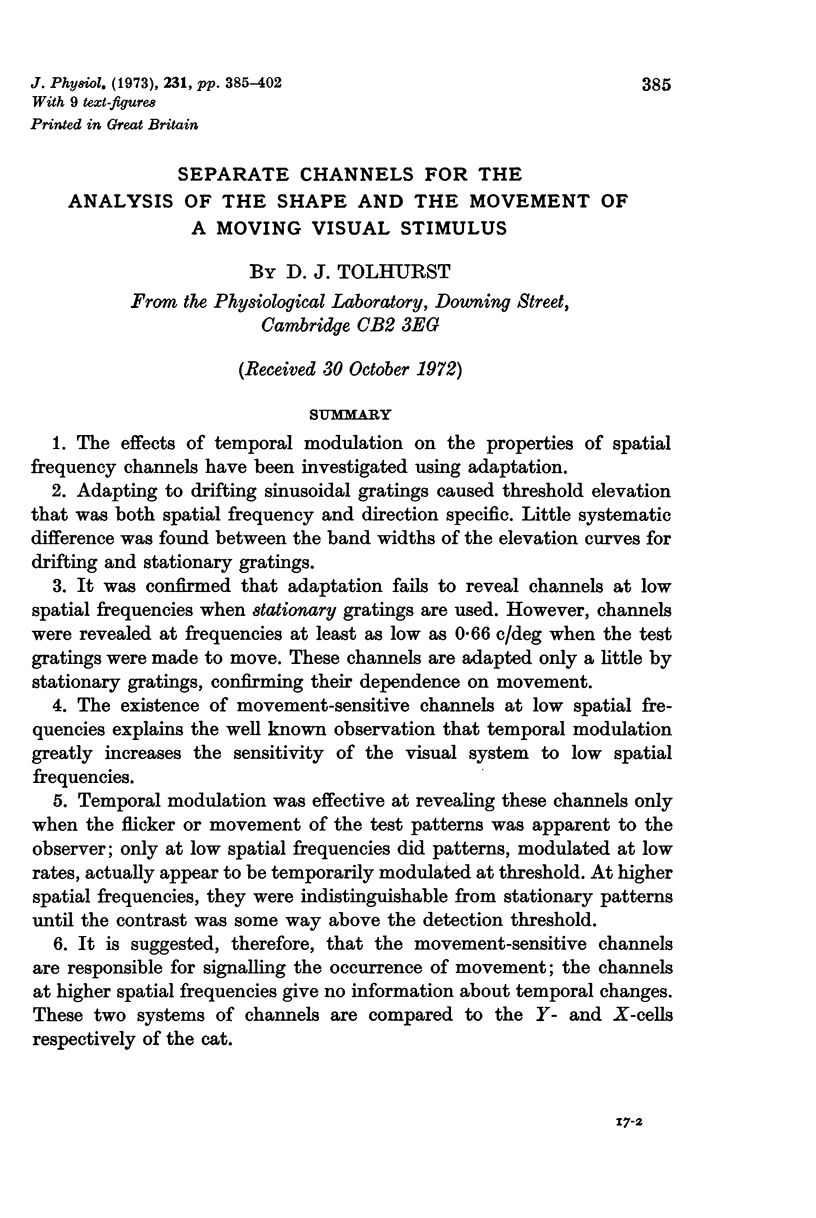
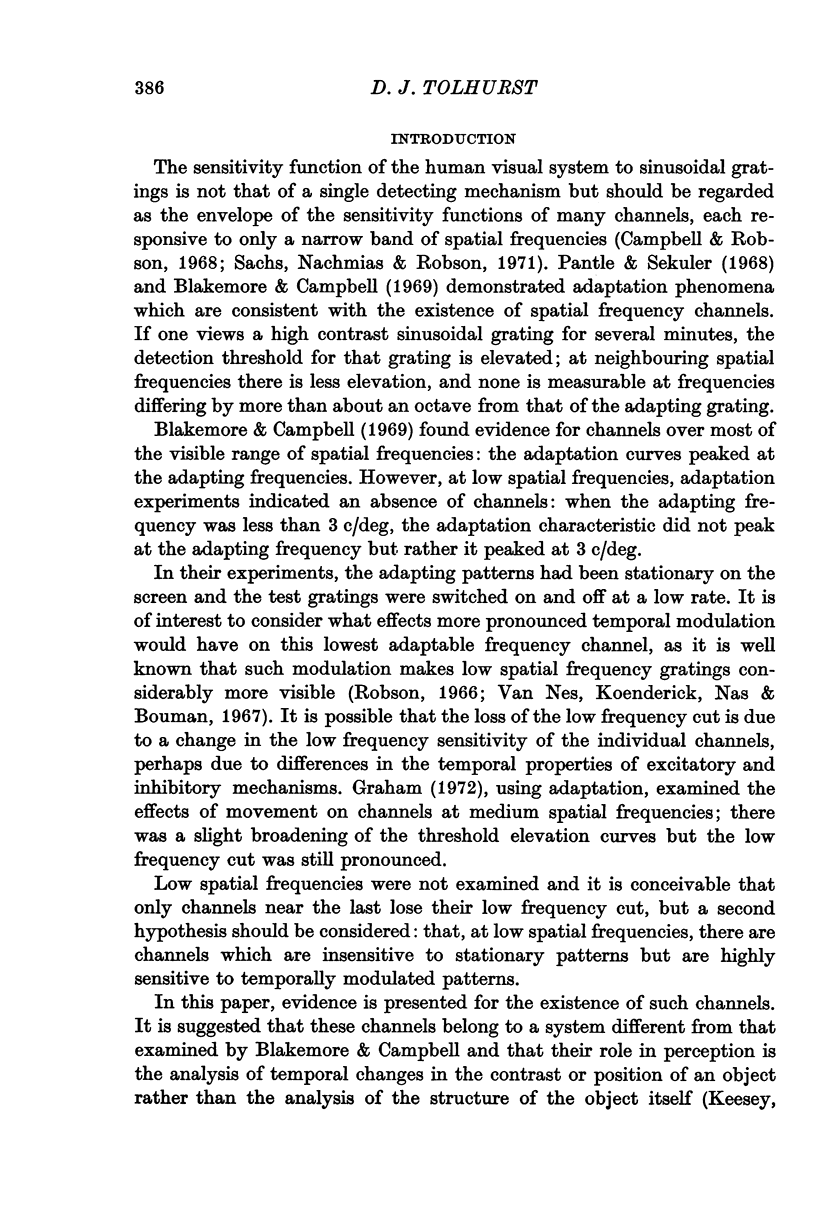
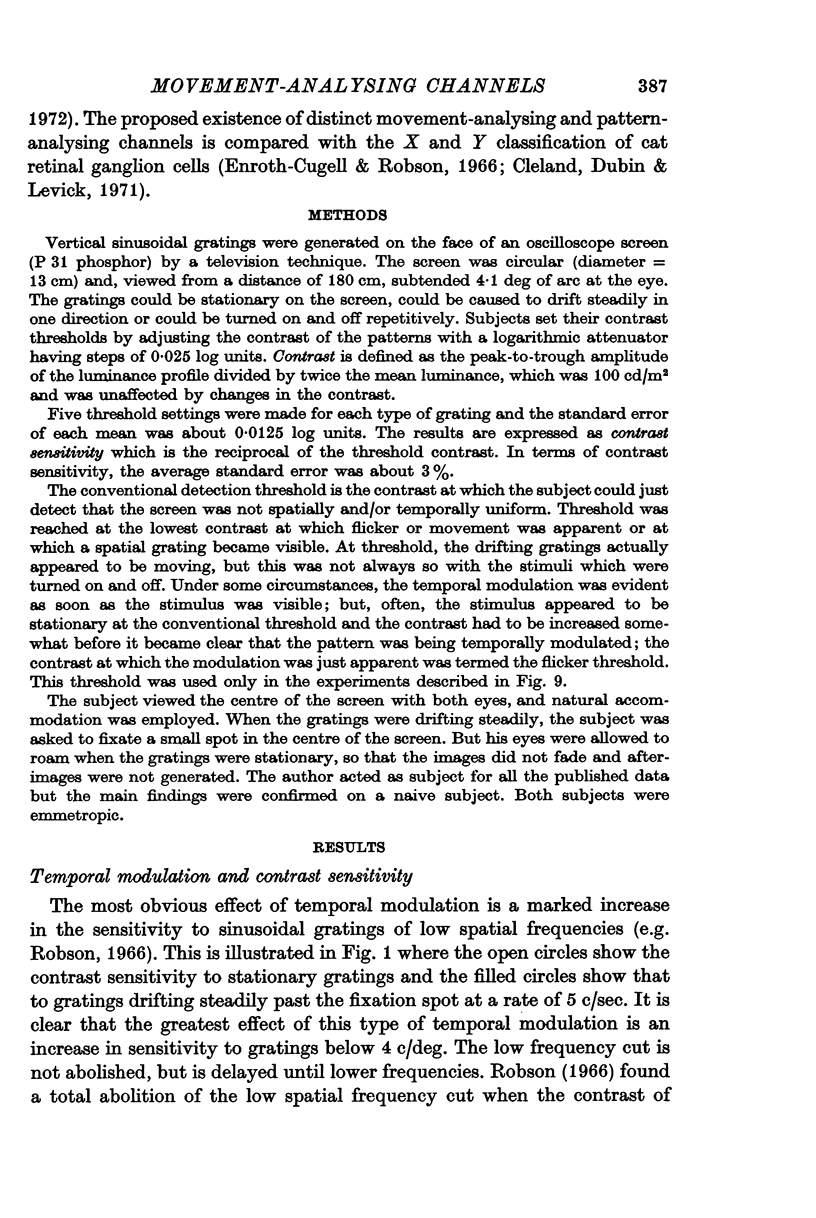
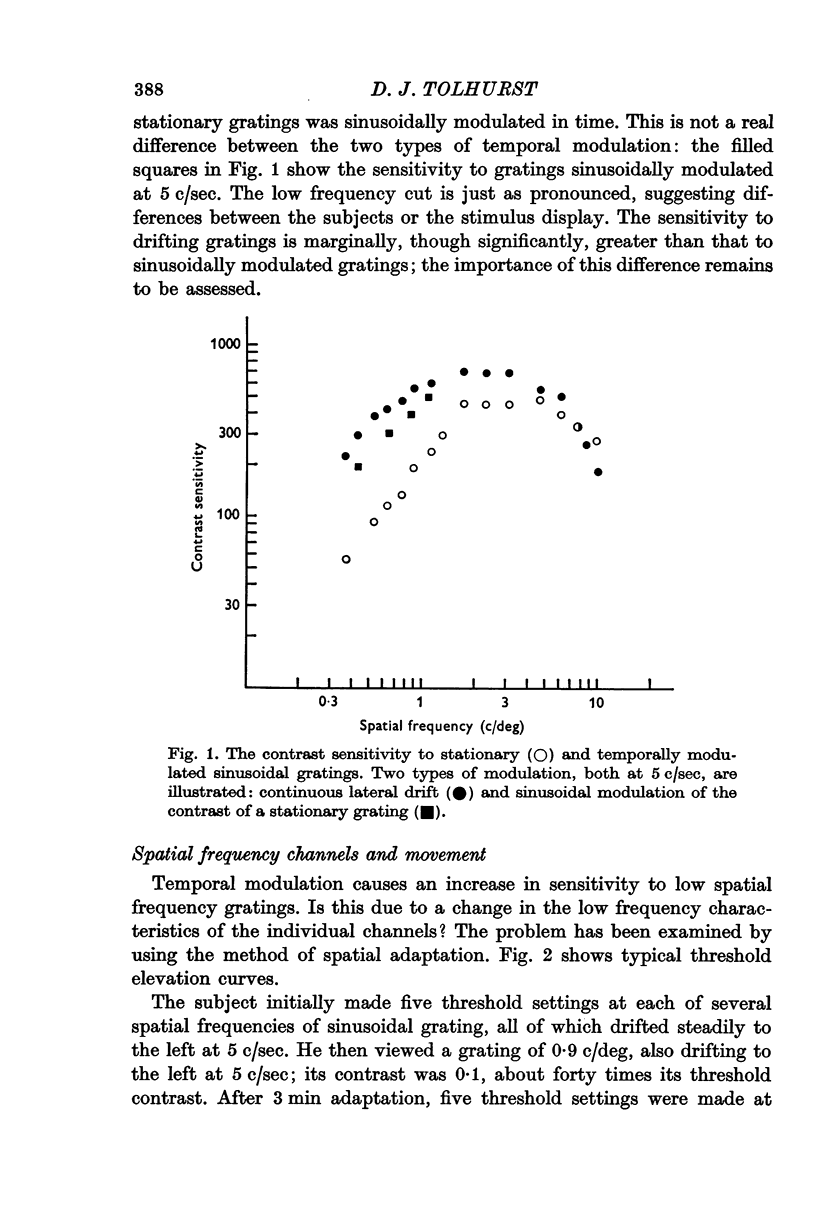
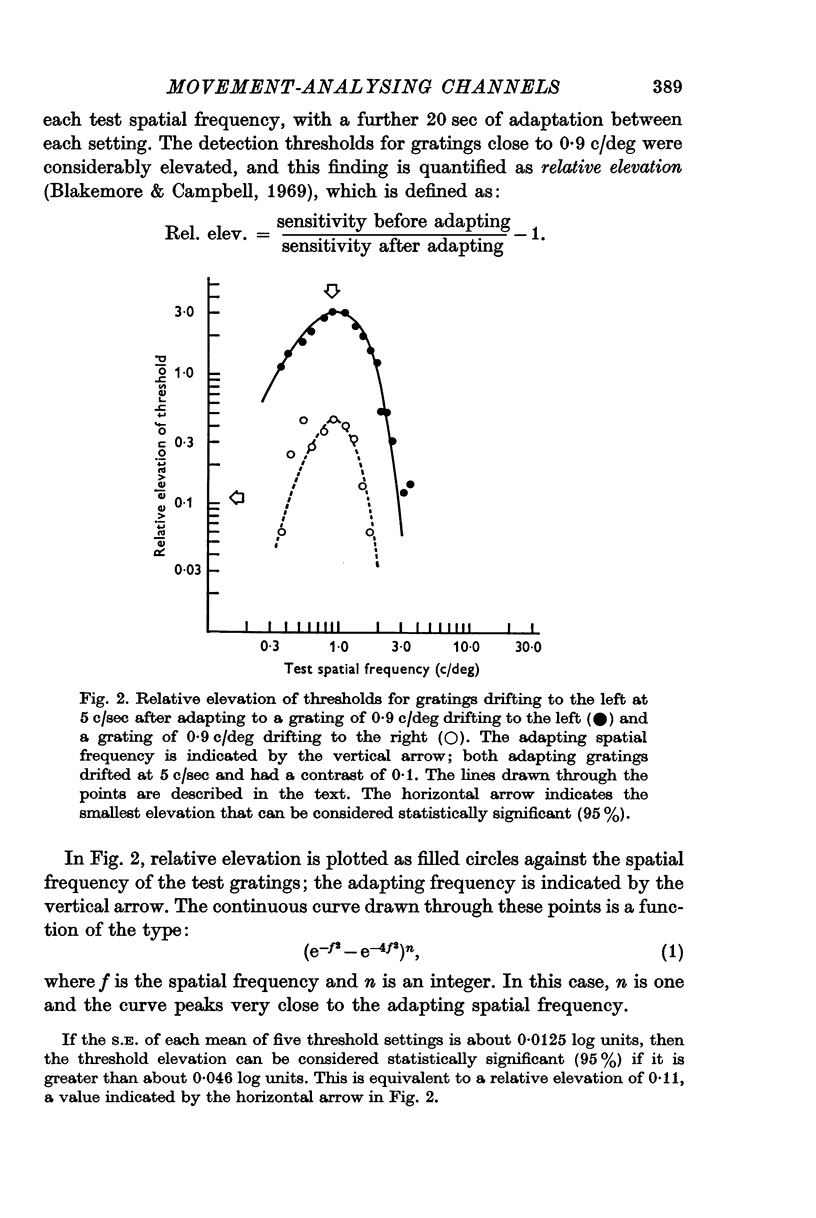
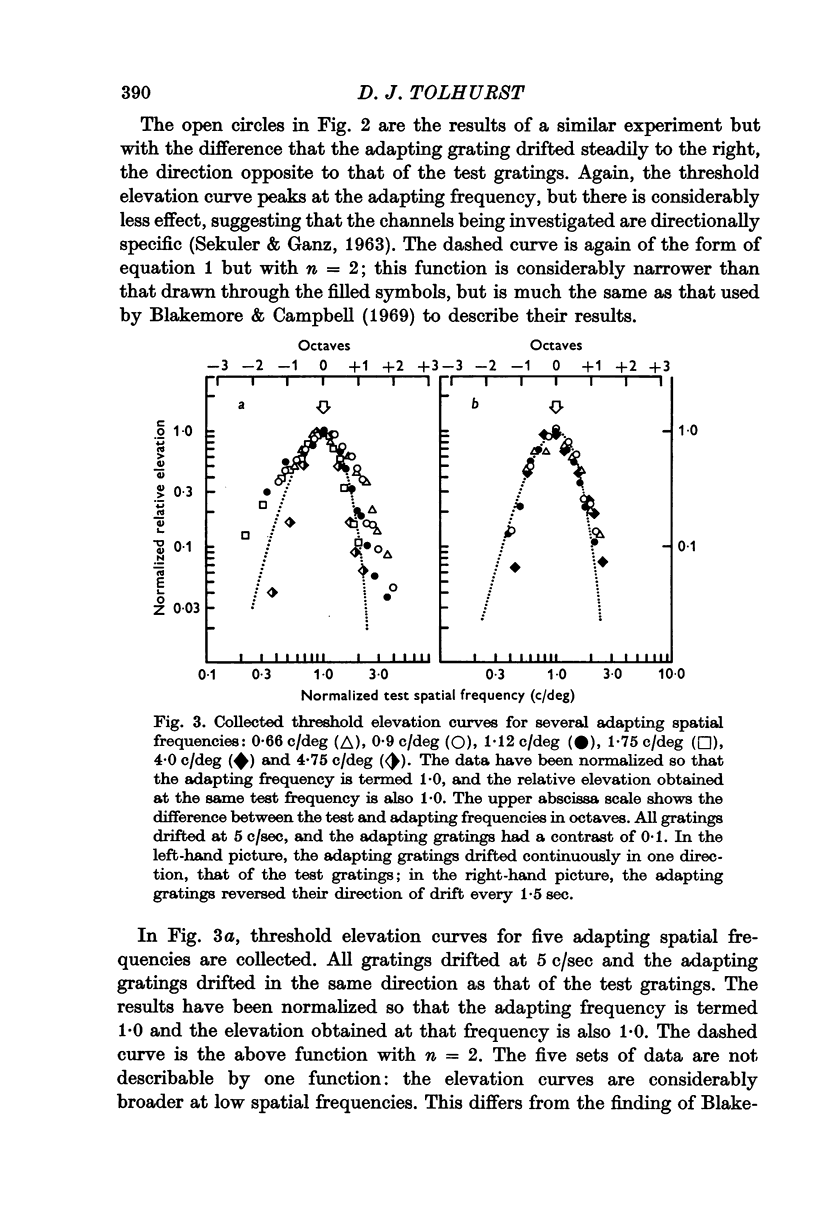
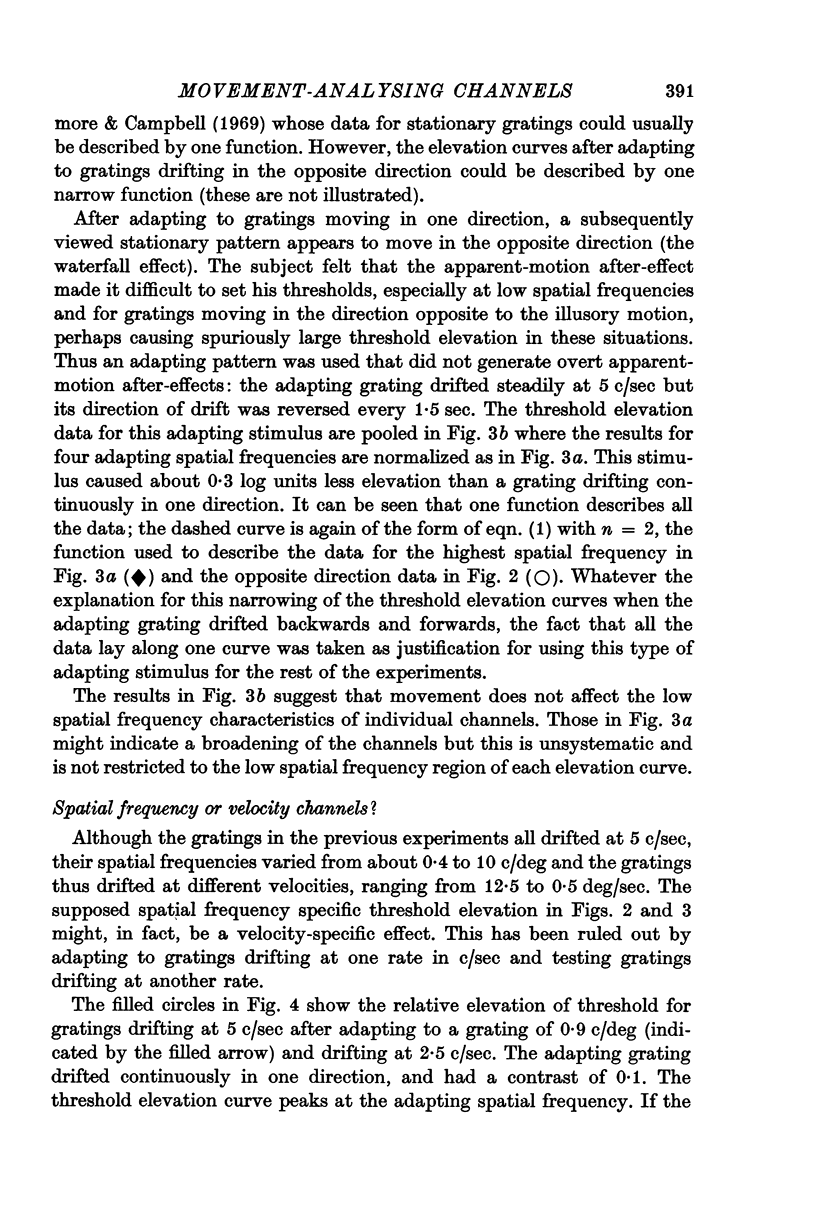
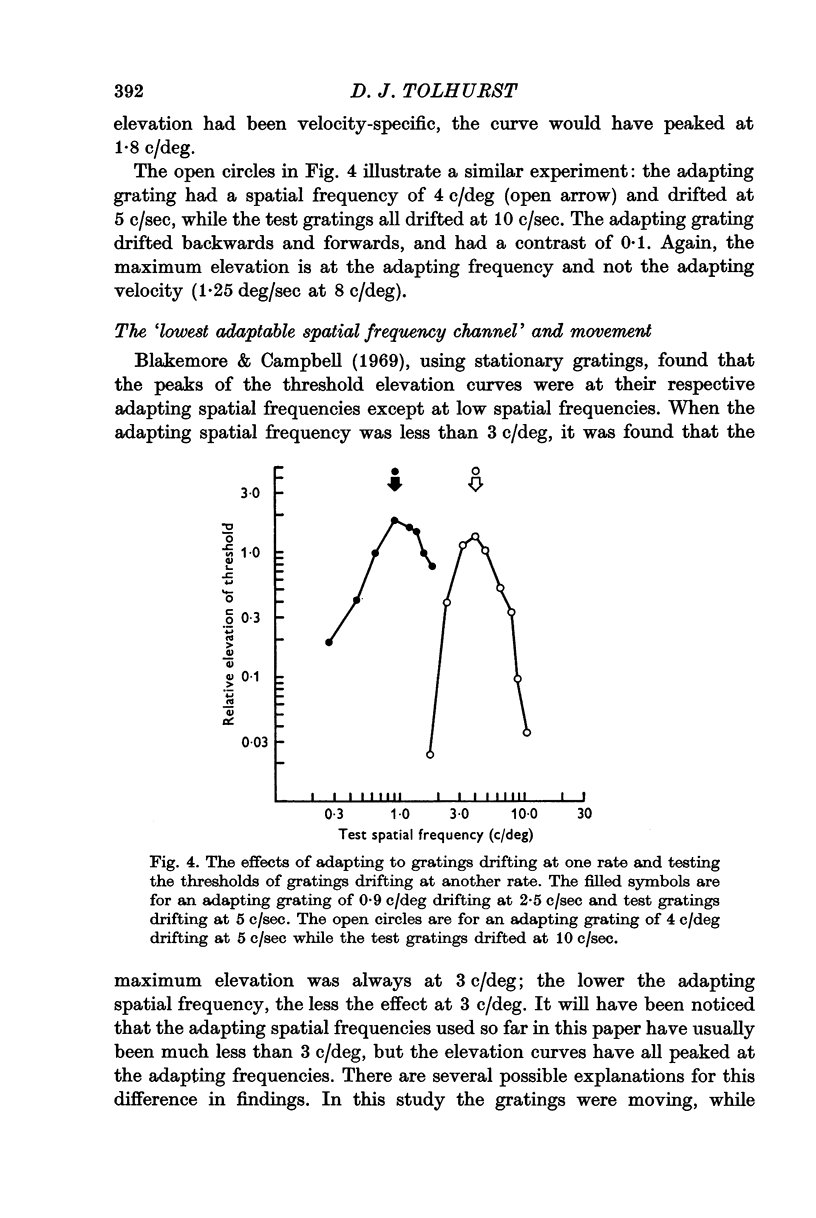
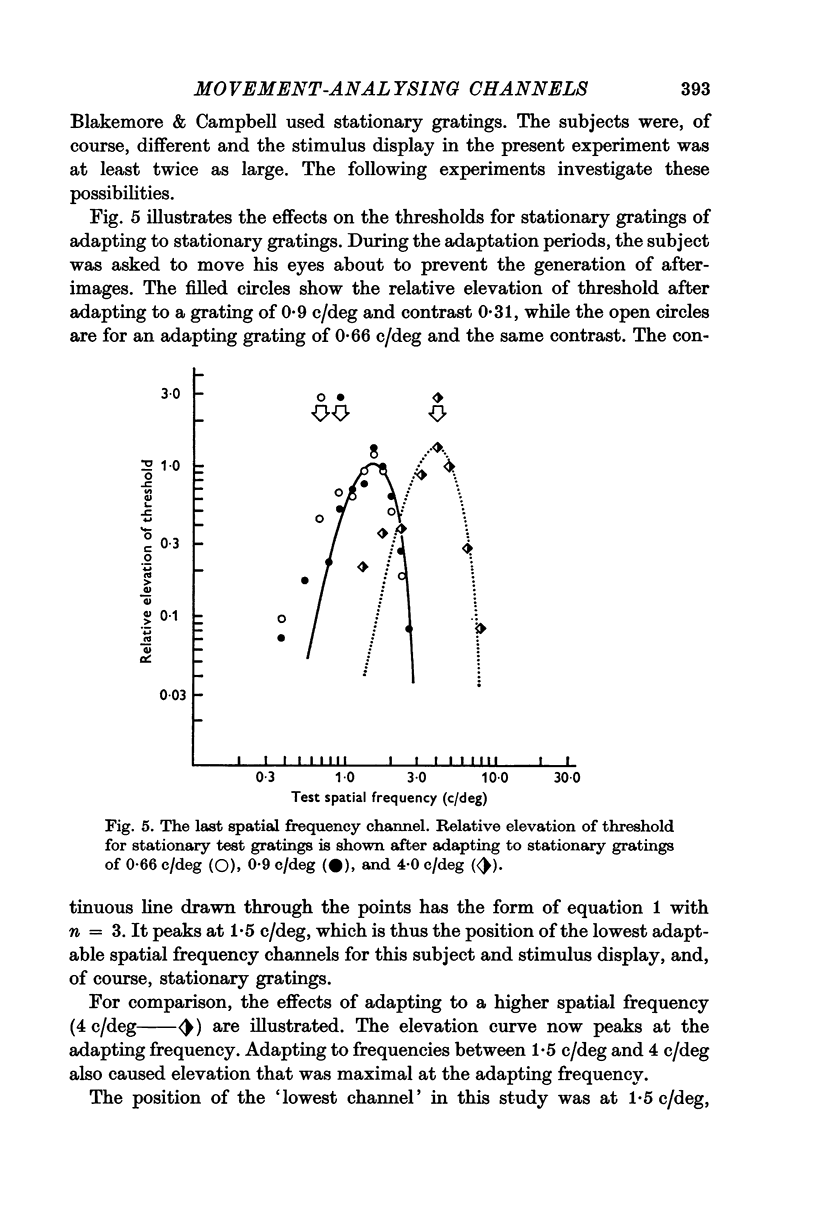
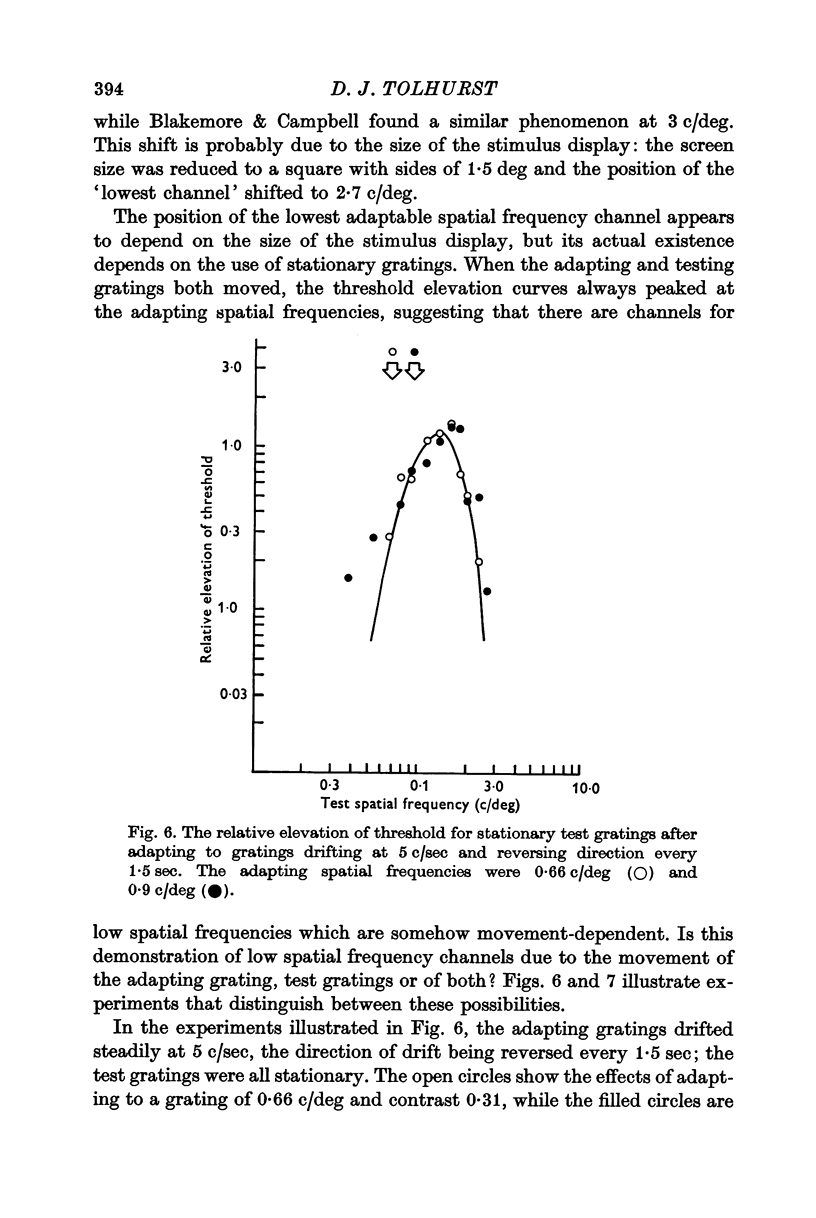
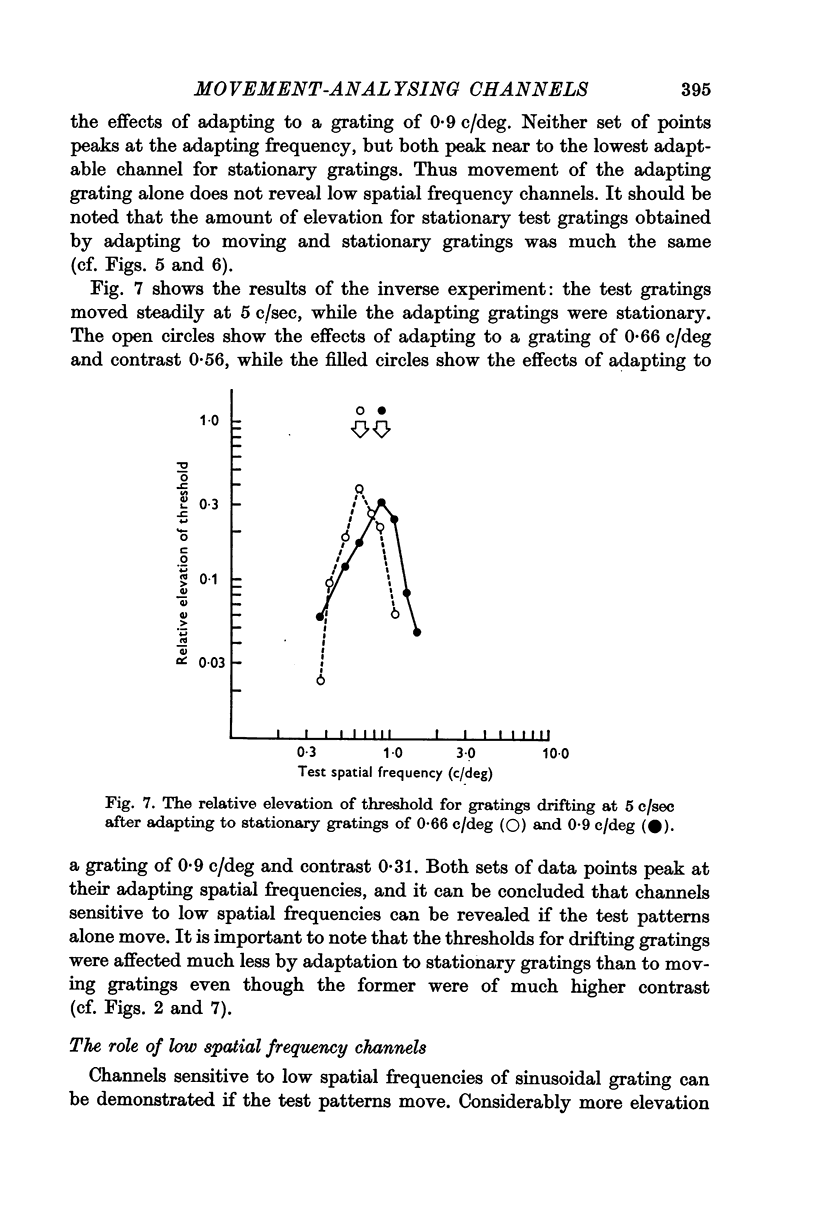
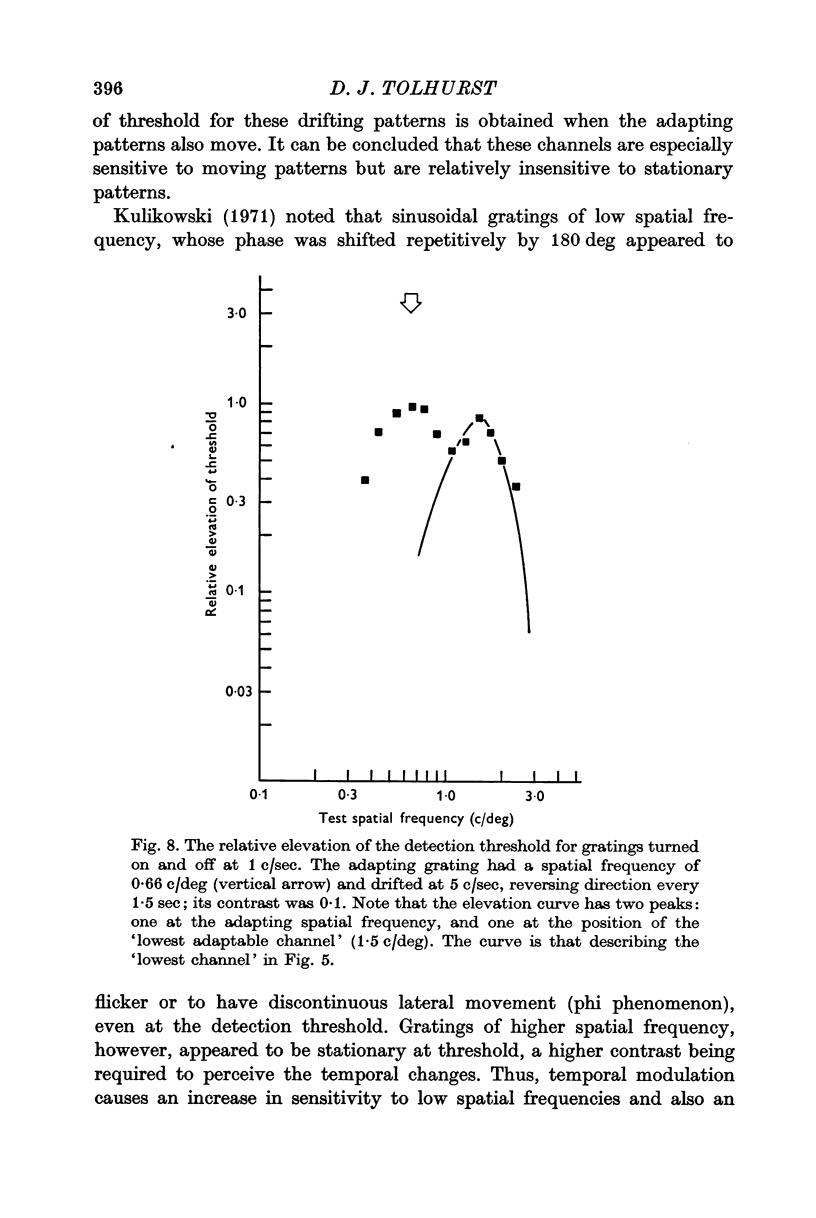
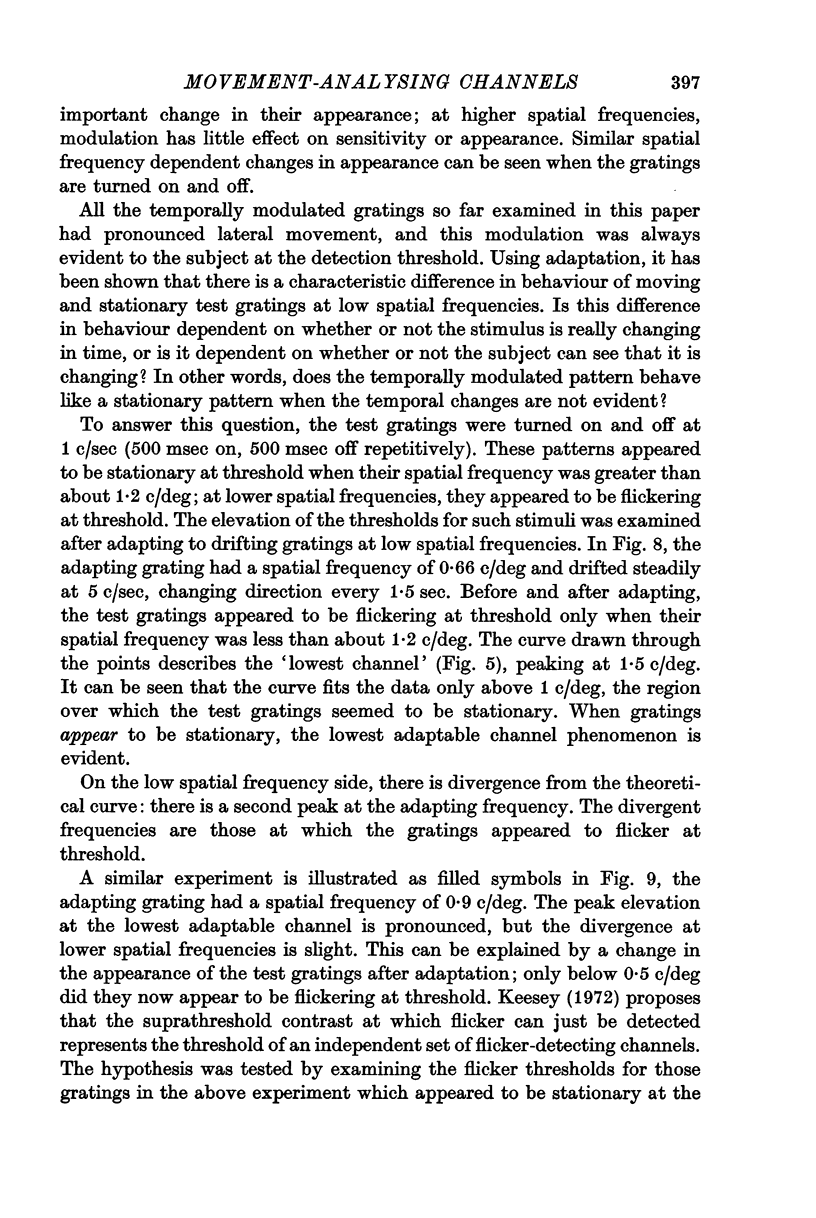
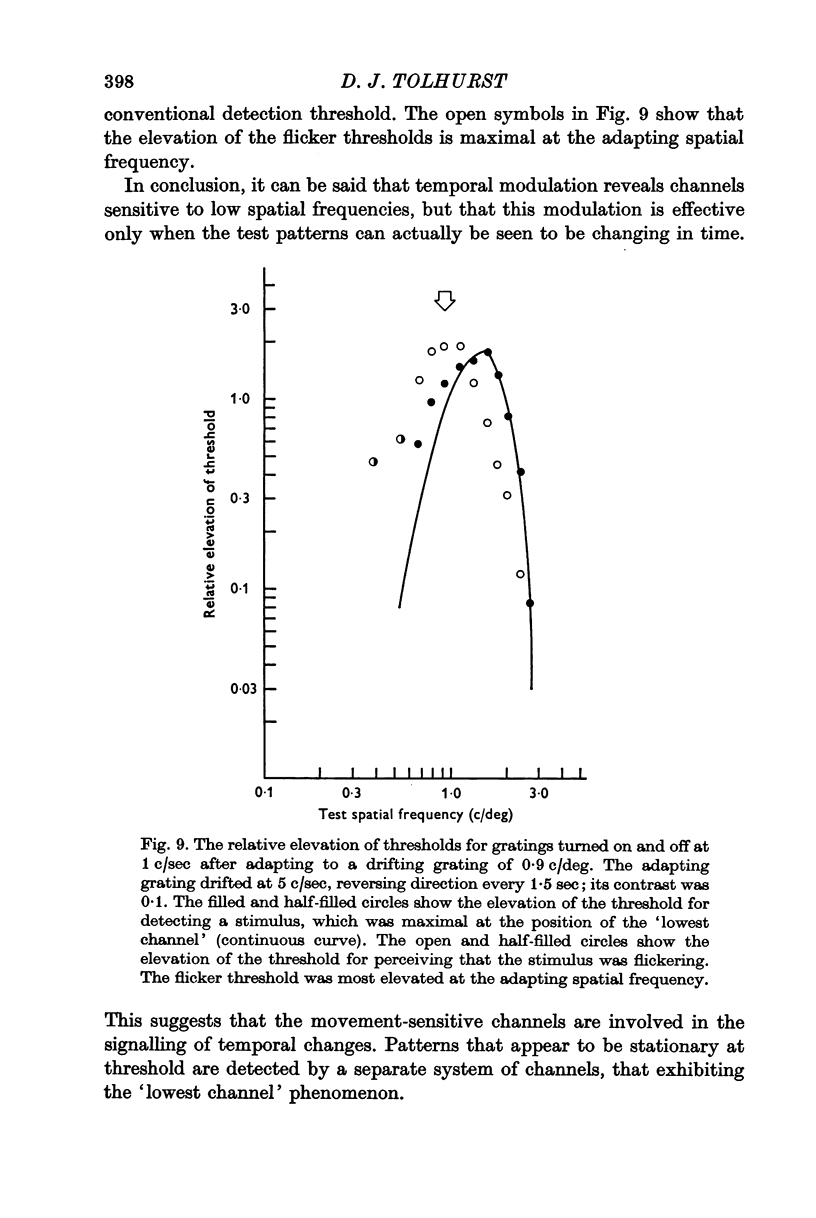
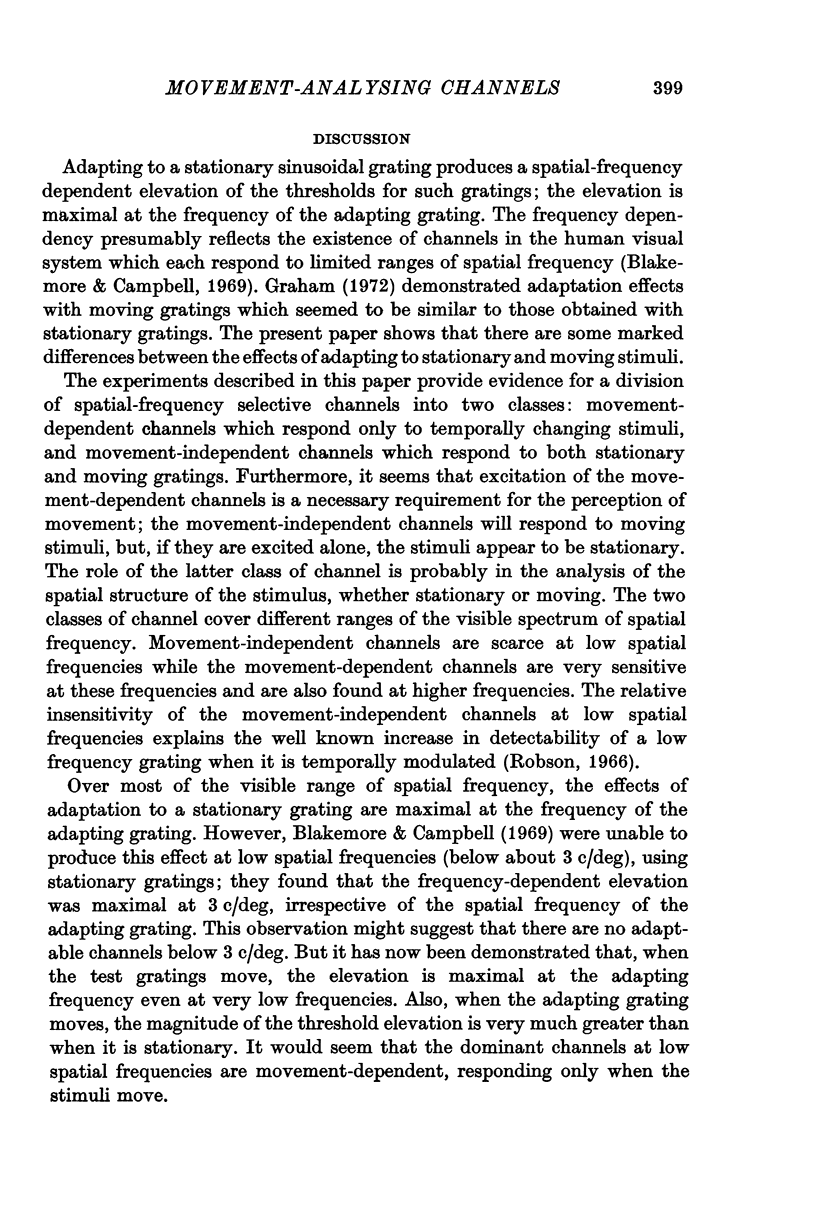
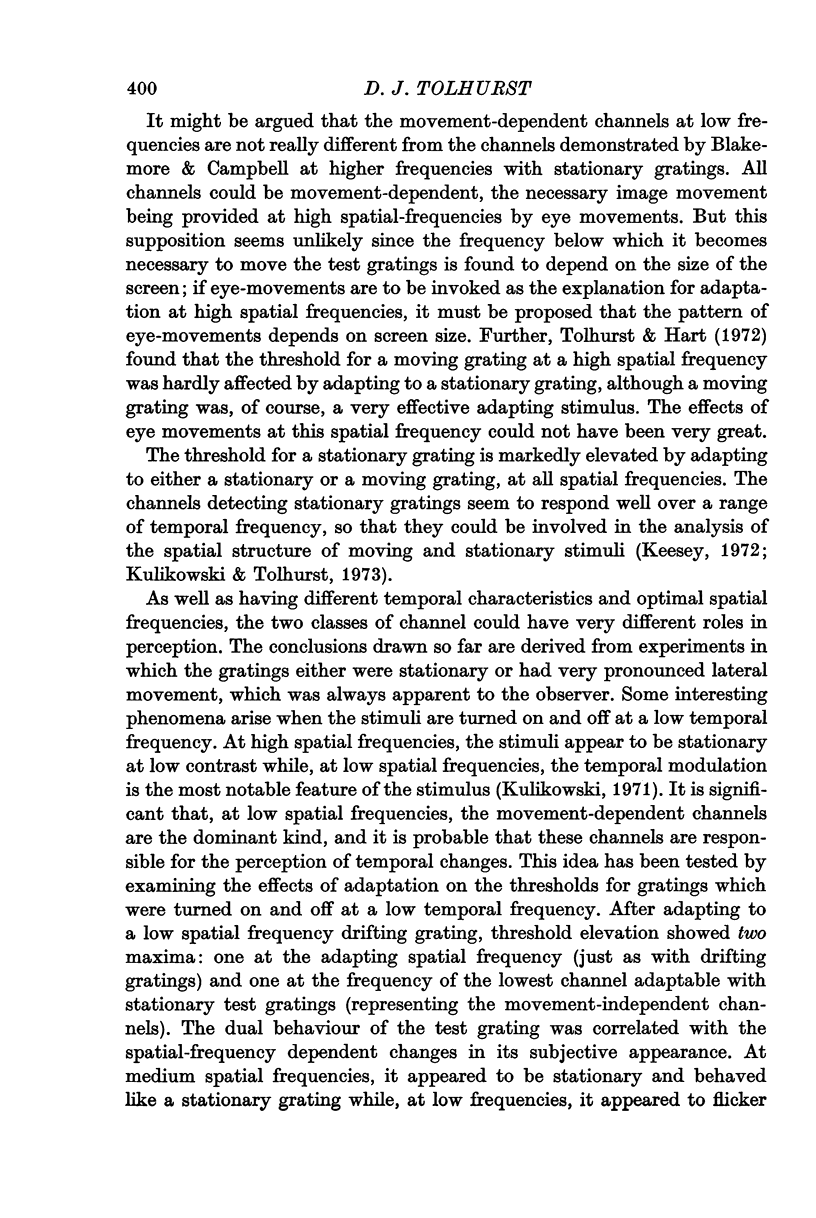
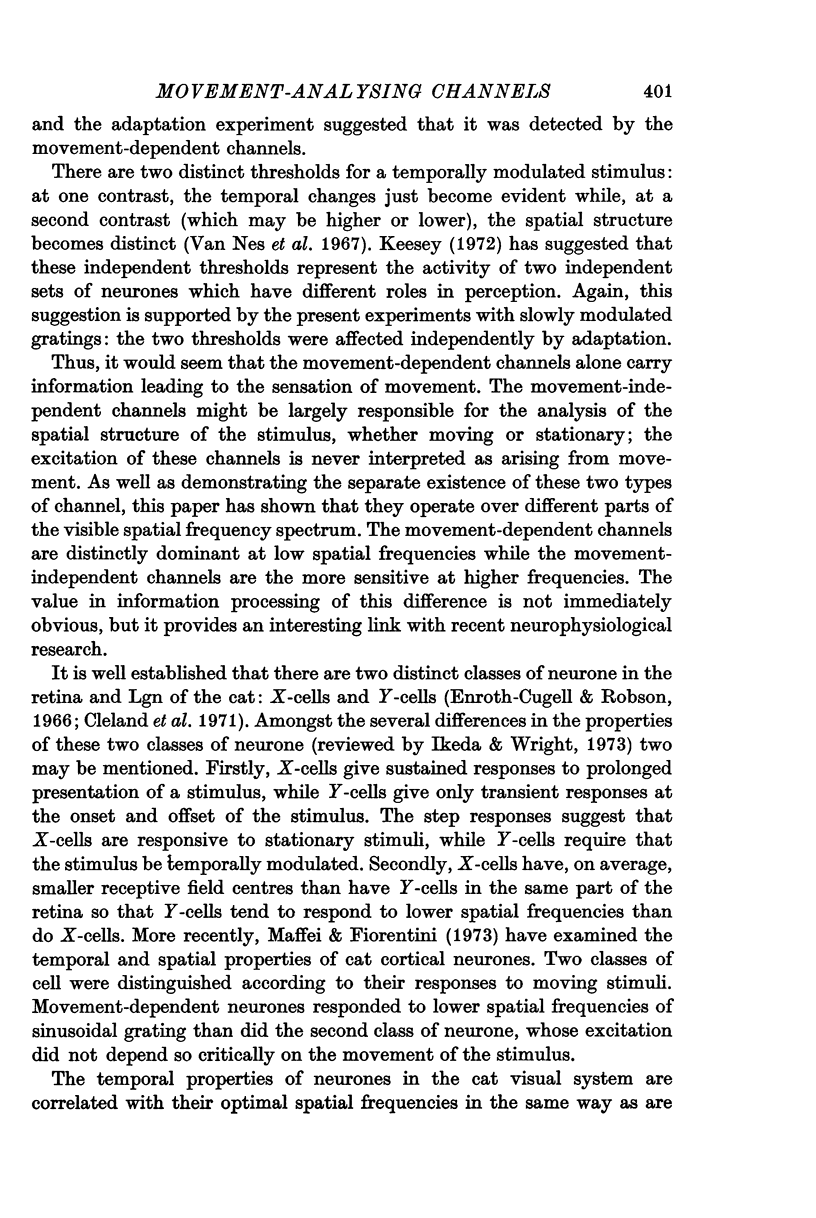
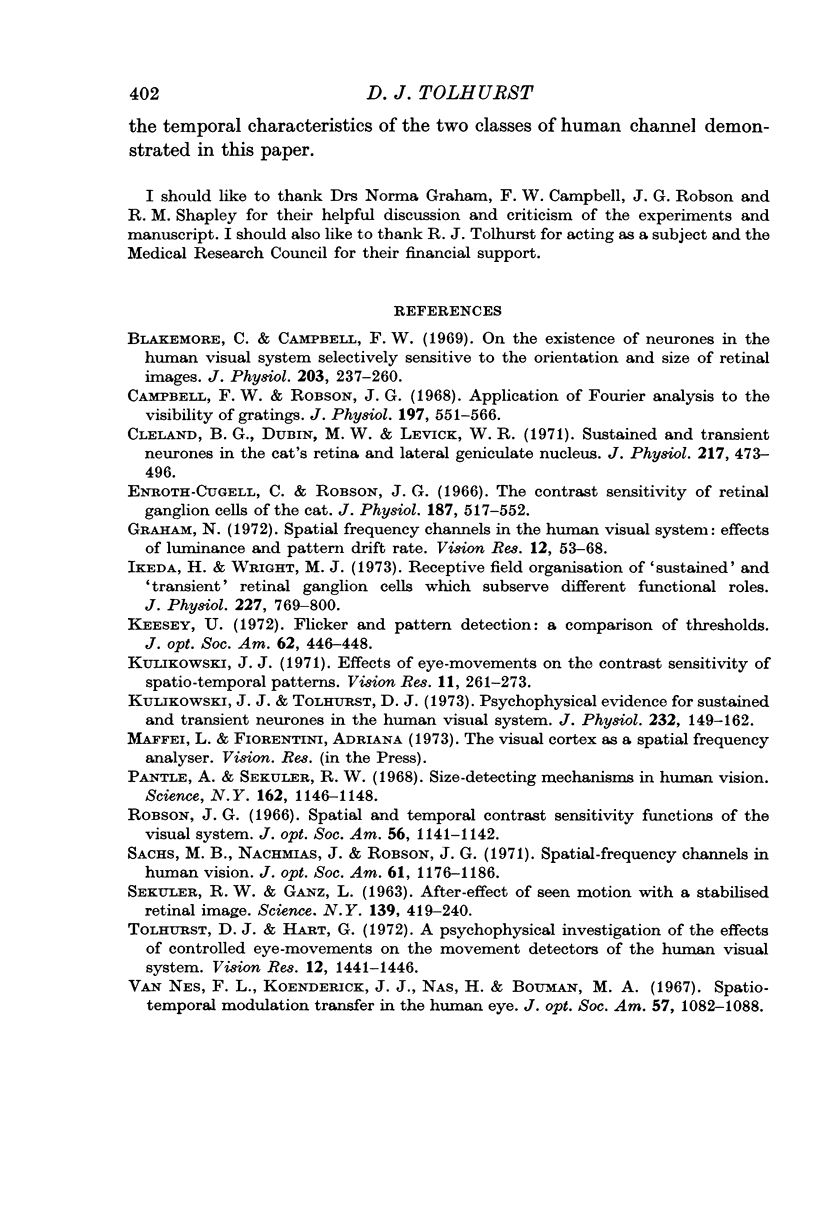
Selected References
These references are in PubMed. This may not be the complete list of references from this article.
- Blakemore C., Campbell F. W. On the existence of neurones in the human visual system selectively sensitive to the orientation and size of retinal images. J Physiol. 1969 Jul;203(1):237–260. doi: 10.1113/jphysiol.1969.sp008862. [DOI] [PMC free article] [PubMed] [Google Scholar]
- Campbell F. W., Robson J. G. Application of Fourier analysis to the visibility of gratings. J Physiol. 1968 Aug;197(3):551–566. doi: 10.1113/jphysiol.1968.sp008574. [DOI] [PMC free article] [PubMed] [Google Scholar]
- Cleland B. G., Dubin M. W., Levick W. R. Sustained and transient neurones in the cat's retina and lateral geniculate nucleus. J Physiol. 1971 Sep;217(2):473–496. doi: 10.1113/jphysiol.1971.sp009581. [DOI] [PMC free article] [PubMed] [Google Scholar]
- Enroth-Cugell C., Robson J. G. The contrast sensitivity of retinal ganglion cells of the cat. J Physiol. 1966 Dec;187(3):517–552. doi: 10.1113/jphysiol.1966.sp008107. [DOI] [PMC free article] [PubMed] [Google Scholar]
- Graham N. Spatial frequency channels in the human visual system: effects of luminance and pattern drift rate. Vision Res. 1972 Jan;12(1):53–68. doi: 10.1016/0042-6989(72)90137-x. [DOI] [PubMed] [Google Scholar]
- Ikeda H., Wright M. J. Receptive field organization of 'sustained' and 'transient' retinal ganglion cells which subserve different function roles. J Physiol. 1972 Dec;227(3):769–800. doi: 10.1113/jphysiol.1972.sp010058. [DOI] [PMC free article] [PubMed] [Google Scholar]
- Keesey U. T. Flicker and pattern detection: a comparison of thresholds. J Opt Soc Am. 1972 Mar;62(3):446–448. doi: 10.1364/josa.62.000446. [DOI] [PubMed] [Google Scholar]
- Kulikowski J. J. Effect of eye movements on the contrast sensitivity of spatio-temporal patterns. Vision Res. 1971 Mar;11(3):261–273. doi: 10.1016/0042-6989(71)90190-8. [DOI] [PubMed] [Google Scholar]
- Kulikowski J. J., Tolhurst D. J. Psychophysical evidence for sustained and transient detectors in human vision. J Physiol. 1973 Jul;232(1):149–162. doi: 10.1113/jphysiol.1973.sp010261. [DOI] [PMC free article] [PubMed] [Google Scholar]
- Pantle A., Sekuler R. Size-detecting mechanisms in human vision. Science. 1968 Dec 6;162(3858):1146–1148. doi: 10.1126/science.162.3858.1146-a. [DOI] [PubMed] [Google Scholar]
- SEKULER R. W., GANZ L. Aftereffect of seen motion with a stabilized retinal image. Science. 1963 Feb 1;139(3553):419–420. doi: 10.1126/science.139.3553.419. [DOI] [PubMed] [Google Scholar]
- Sachs M. B., Nachmias J., Robson J. G. Spatial-frequency channels in human vision. J Opt Soc Am. 1971 Sep;61(9):1176–1186. doi: 10.1364/josa.61.001176. [DOI] [PubMed] [Google Scholar]
- Tolhurst D. J., Hart G. A psychophysical investigation of the effects of controlled eye movements on the movement detectors of the human visual system. Vision Res. 1972 Sep;12(9):1441–1446. doi: 10.1016/0042-6989(72)90170-8. [DOI] [PubMed] [Google Scholar]
- van Nes F. L., Koenderink J. J., Nas H., Bouman M. A. Spatiotemporal modulation transfer in the human eye. J Opt Soc Am. 1967 Sep;57(9):1082–1088. doi: 10.1364/josa.57.001082. [DOI] [PubMed] [Google Scholar]


